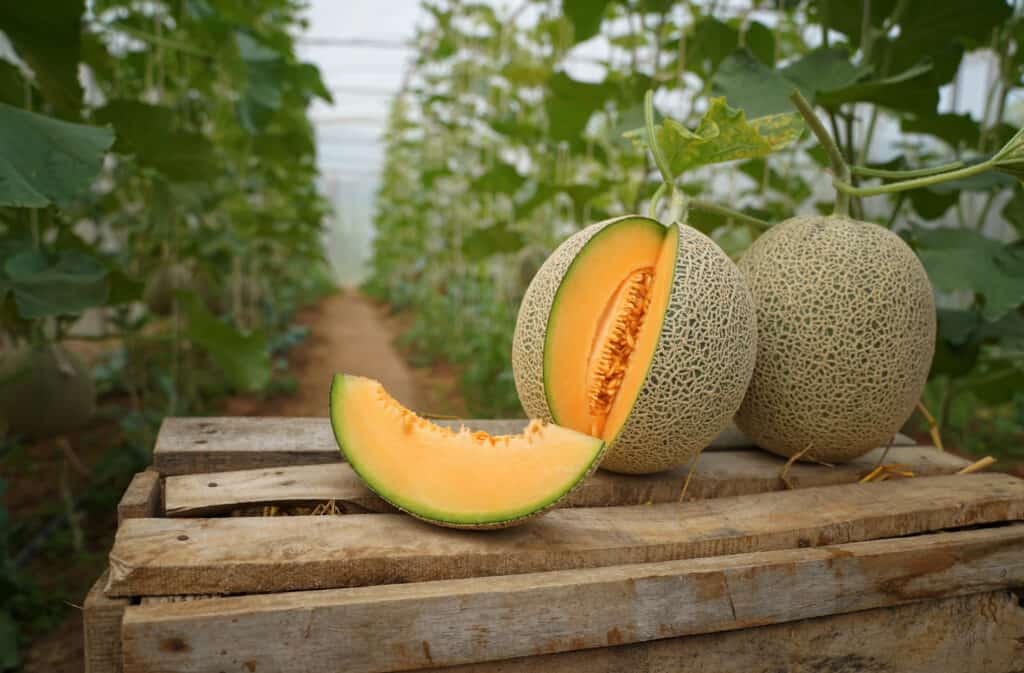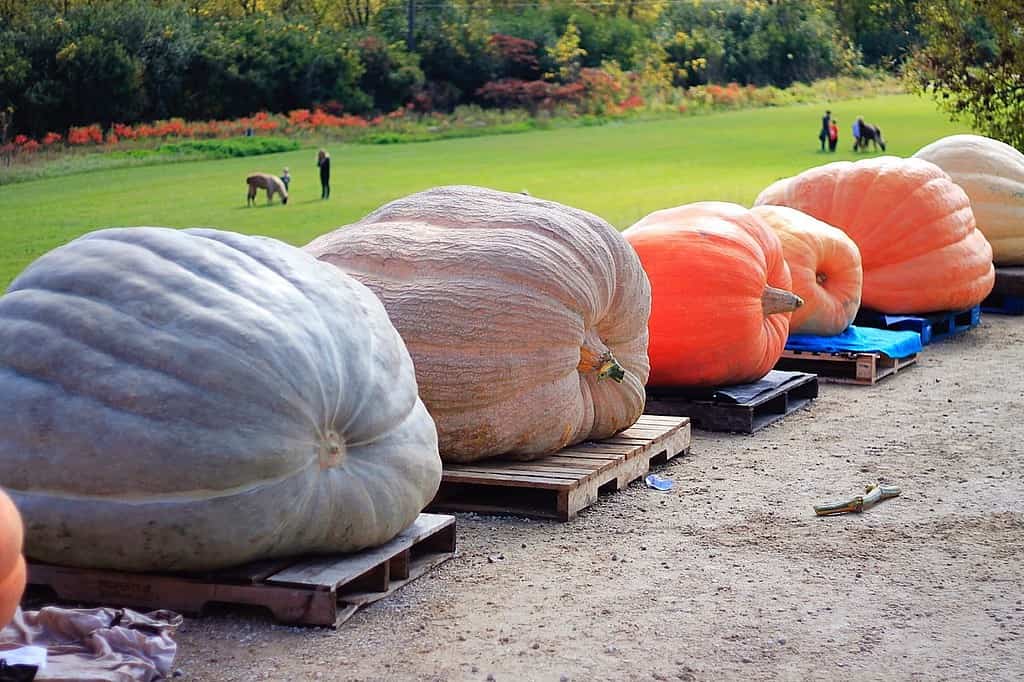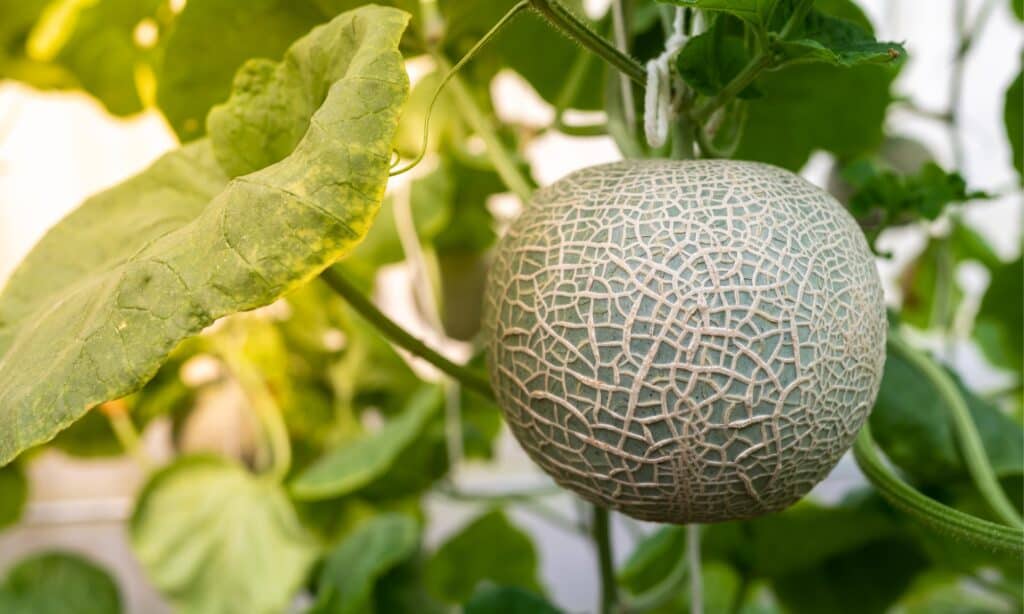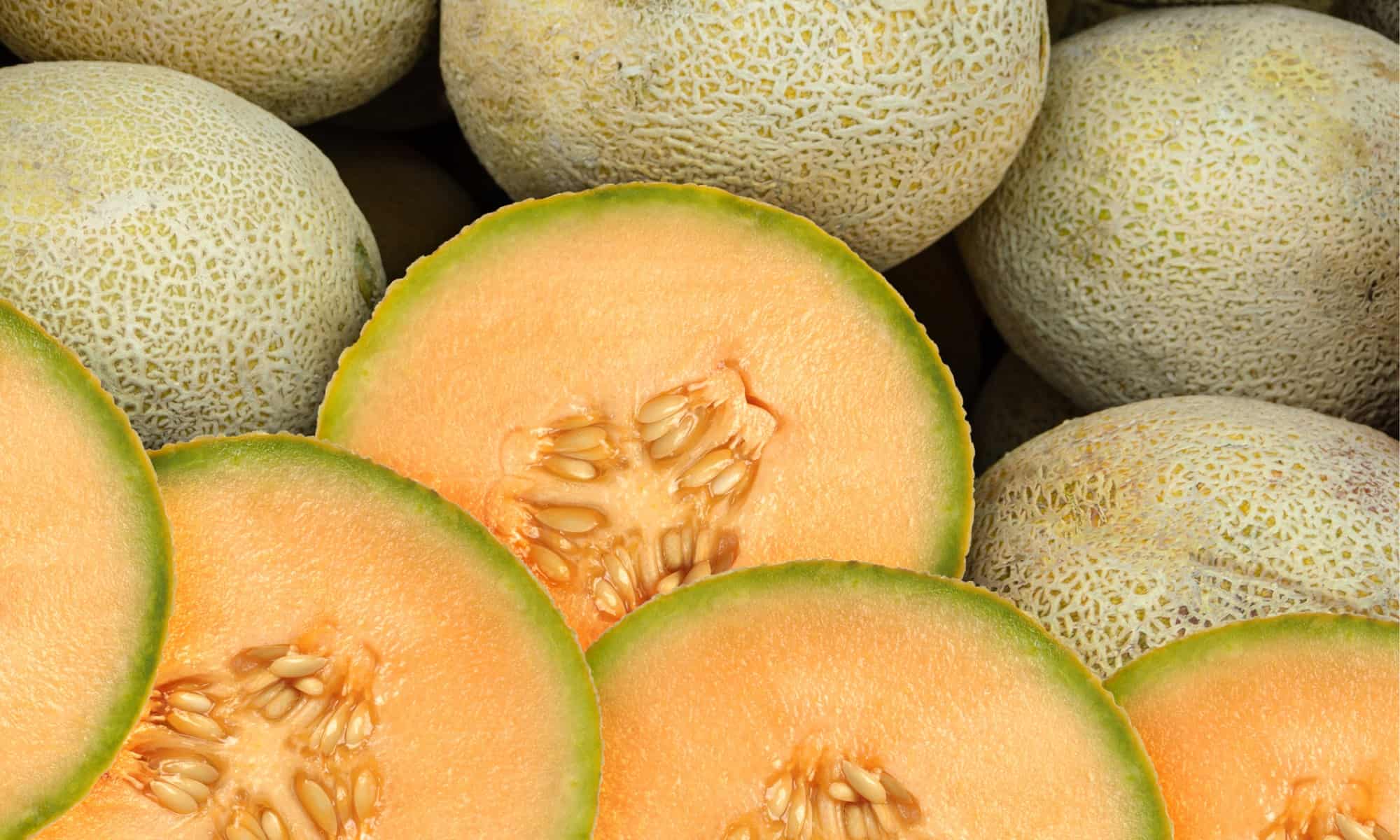Growing any type of fruit or vegetable in your own garden can be immensely satisfying, but what if you grew a record-breaking fruit? By choosing the right variety and taking expert care of your crop, you might be able to join the ranks of other record-setting fruit growers. We’re exploring the heaviest cantaloupe ever grown, including who grew it, the specific variety, and some ways you might be able to grow a large cantaloupe too!
How Large is the Heaviest Cantaloupe Ever Grown?

Most cantaloupes weigh about three pounds. These varieties are typically Sugar Kiss, Tuscan, or Galia.
©Attasit saentep/Shutterstock.com
The heaviest cantaloupe was grown by William N. McCaslin and weighed slightly over 67 pounds! For reference, a one-year-old black bear is between 30-70 pounds. It was also 136 inches in circumference, which is 11 feet and 4 inches. This fruit was grown in and certified in Hawesville, Kentucky in August of 2019. This cantaloupe was certified by the Great Pumpkin Commonwealth (GPC), so you know it’s official. It is also in the Guinness Book of World Records as the heaviest cantaloupe.
What is the Great Pumpkin Commonwealth?

Farm festivals are a good example of places where you might see weigh-offs for large fruits.
©Gretchen Gunda Enger/Shutterstock.com
The GPC is an organization dedicated to finding the highest quality and largest fruits out there. People can register their contests to be officially certified by the GPC. They also hold international grower’s events. The GPC recognizes not only gardeners growing absurdly heavy, record-holding fruits like pumpkins and cantaloupes, but they also recognize the most improved sites for weigh-offs and have a grower of the year.
Rules
There are 38 pages of rules pertaining to the GPC. Generally, you must ensure there are no chemical substances on the fruit. The scale used to weigh the fruit initially must be a certified scale, and the fruit must be free of rot, holes, or cracks to the interior. The visual assessment is done before taking the weight. Any damage greater than 3 inches in diameter and/or depth can be grounds for disqualification, as well as if there are more than two damaged spots.
How to Join
Joining the GPC requires contact with your local regional representative to determine if there is an appropriate site to hold the event. If so, you’ll need to coordinate for an official to be there for the weighing of the fruit. Weigh-off regions occur throughout the U.S. and in Europe. There was also recently a weigh-off in Japan, so this committee is truly an international entity.
What Variety is the Heaviest Cantaloupe?
The cantaloupe grown by McCaslin was a North Carolina giant. The seeds have a germination rate of 90% and grow on average between 20 to 66 pounds. The specimen grown by McCaslin was slightly above the expected average weight. This cantaloupe takes about four months from germination to harvest, which is around a month or so longer than smaller varieties.
Tips on Growing Large Cantaloupes

Be sure you give your cantaloupe plants at least 3 feet between each plant and up to 6 feet.
©iStock.com/sKrisda
If you’re considering trying your hand at growing cantaloupe and possibly topping the current heaviest cantaloupe grown, here are some tips:
- Pick a large-growing variety. North Carolina giant, divergent, or colossal cantaloupe are good options.
- Plant outdoors three weeks after the last frost. This will help ensure your seedlings survive to harvest. You can also start your seeds indoors two to three weeks after the last frost so you can transplant them outdoors at the right time.
- Keep the formed fruit off the ground to help keep excessive moisture away. Pests might also have a more difficult time getting to them if they’re above ground.
- Use a fertilizer high in phosphorus and potassium to aid fruit development. 5-10-10 NPK or a similar ratio works well. Fertilize as suggested on your product’s label to avoid overfertilization, which can damage the plant.
- Avoid overwatering. Overwatering can wash out the sweetness in the mature fruit. Reduce watering a week before harvesting to allow the fruit’s sugars to concentrate for the best-tasting result.
- Harvest when the fruit begins to smell fragrant and is just slightly soft. There might be more specific details for your chosen variety, but generally, a noticeable sweet scent from the fruit is a good sign to harvest.
Thank you for reading! Have some feedback for us? Contact the AZ Animals editorial team.








